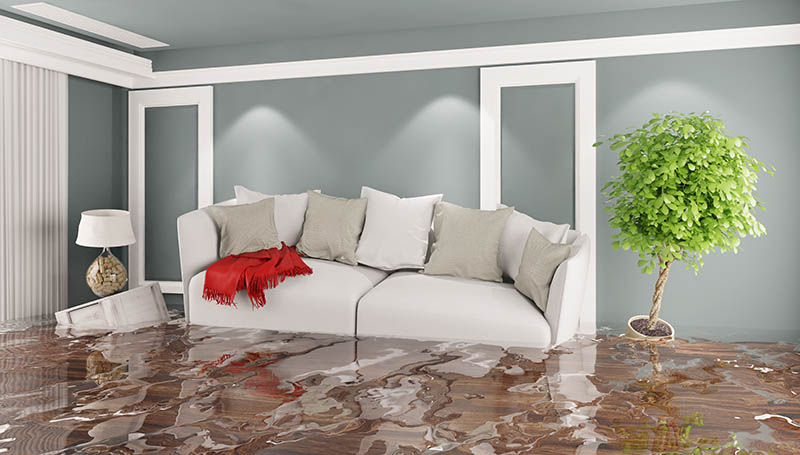Exposing Major Sources Behind Residential Water Leak Issues
Exposing Major Sources Behind Residential Water Leak Issues
Blog Article
This article in the next paragraphs pertaining to How to detect water leaks in your home is exceptionally remarkable. Give it a try and make your own final thoughts.

Leaks not only cause waste of water but can also create unnecessary damage to your residence as well as promote unwanted natural development. Water leaks may go unnoticed because many of the pipework in our house is concealed. By recognizing and looking for day-to-day circumstances that create leaks, you can shield your home from future leakages and unnecessary damages. Today, we will take a look at 6 leak causes that might be creating your pipes to leak.
Trespassing roots
Most water leakages begin outside your house rather than inside it. If you notice an abrupt reduction in water pressure, state in your tap, take some time to head out as well as analyze your backyard. You may notice damp spots or sinkholes in your lawn, which might mean that tree origins are invading water lines creating water to seep out. You can have your plumber look for intrusion, specifically if you have trees or shrubs near your home.
Corroded water supply
As time goes by, your plumbing system ages and also deterioration such as rust may start eating away the pipes. This could be the reason for staining or warping on your pipes. This calls for an evaluation with your plumber instantly. Think about replacing the pipelines given that they are at a greater danger of rust than the newer designs if our plumbing system is old.
Defective Pipe Joints
Pipe joints can deteriorate over time, resulting in water leaks. If you have loud pipelines that make ticking or banging sounds, especially when the hot water is transformed on, your pipeline joints are most likely under a great deal of pressure.
Instant temperature modifications.
Extreme temperature level changes in our pipelines can cause them to expand and contract unexpectedly. This expansion and contraction might create fractures in the pipes, particularly if the temperature level are below freezing. If you maintained an eye on how your plumbing functions, it would certainly be best. The presence of the previously stated situations often shows a high threat.
Poor Water Connectors
Sometimes, a leak can be brought on by loosened hose pipes as well as pipes that supply your appliances. Typically, shifting is what triggers the loosened water Connections. You could discover when it comes to a washing equipment, a pipe might spring a leak as a result of shaking during the spin cycle. In case of a water links leakage, you may discover water running straight from the supply line or puddles around your devices.
Clogged Drains
Blocked drains pipes could be bothersome as well as inconveniencing, yet they can sometimes end up causing an overflow resulting in rupture pipelines. Maintain eliminating any type of products that might decrease your drains that might clog them to prevent such aggravations.
All the above are reasons for leaks but not all water leaks result from plumbing leaks; some leaks may originate from roof leaks. All leakages need to be fixed right away to stay clear of water damage.
Leaks not only create waste of water yet can also create unneeded damage to your home and also advertise unwanted natural growth. By comprehending and looking for everyday scenarios that trigger leakages, you can secure your house from future leaks and unnecessary damages. Today, we will certainly look at 6 leak causes that might be creating your pipelines to drip.
At times, a leak can be created by loosened hose pipes and pipelines that supply your appliances. In instance of a water links leak, you might discover water running directly from the supply line or pools around your appliances.
How To Check For Water Leak In Your Home
How To Check for Leaks
The average household's leaks can account for nearly 10,000 gallons of water wasted every year and ten percent of homes have leaks that waste 90 gallons or more per day. Common types of leaks found in the home are worn toilet flappers, dripping faucets, and other leaking valves. These types of leaks are often easy to fix, requiring only a few tools and hardware that can pay for themselves in water savings. Fixing easily corrected household water leaks can save homeowners about 10 percent on their water bills.
To check for leaks in your home, you first need to determine whether you're wasting water and then identify the source of the leak. Here are some tips for finding leaks:
Take a look at your water usage during a colder month, such as January or February. If a family of four exceeds 12,000 gallons per month, there are serious leaks.
Check your water meter before and after a two-hour period when no water is being used. If the meter changes at all, you probably have a leak.
Identify toilet leaks by placing a drop of food coloring in the toilet tank. If any color shows up in the bowl after 10 minutes, you have a leak. (Be sure to flush immediately after the experiment to avoid staining the tank.)
Examine faucet gaskets and pipe fittings for any water on the outside of the pipe to check for surface leaks.
Undetected water leaks can happen without the home or business owner even realizing. If you suspect a water leak, but not able to find the source. It is time to contact a professional water leak detection service, The Leak Doctor.
How To Find a Water Leak In Your Home
https://www.leakdoctor.com/blog/How-To-Check-For-Water-Leak-In-Your-Home_AE197.html

We had been made aware of that article on How to Find Water Leaks through an acquaintance on a different website. In case you liked our blog post plz remember to share it. We truly appreciate reading our article about Most Common Causes of Leaky Pipes.
High-quality emergency response guaranteed. Report this page